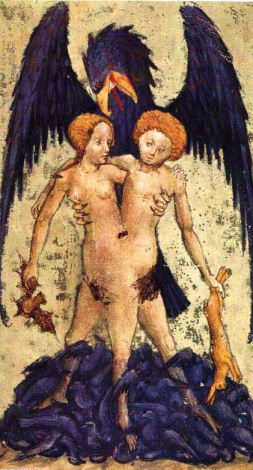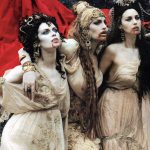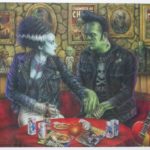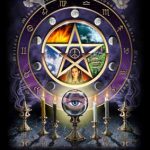Mythic androgyny derives primarily from classical models of dual-sexuality. In Plato’s Symposium, the character Aristophanes describes the hermaphrodite as the original condition of the sexes:
Each of these beings was globular in shape, with rounded back and sides, four arms and four legs, and two faces, both the same, on a cylindrical neck, and one head, with one face on side and one the other, and four ears, and two lots of privates, and all the other parts to match. Plato’s Symposium

The hermaphrodites having grown too ambitious, Zeus decides to split each of them in half. After doing so, he discovers that the now-separate sexes spend all their efforts trying to join themselves back together: “neither would do anything without the other.” Zeus then moves their “privates” such that when any two embraced, they might conceive and thus propagate..” Aristophanes tells us that our “innate love for one another, comes from our nostalgia of our former state to “make two into one.”
Grace Tiffany, in her book Erotic Beasts and Social Monsters, suggests two principal visions of androgyny in the Renaissance: mythic androgyny and satiric androgyny. Mythic androgyny, exemplified in Shakespeare by cross-dressers, water imagery and the fluid individual identity, is essentially a positive movement towards gender transcendence and union/integration.
Satiric androgyny, exemplified in Jonson by feminized male figures and unfixed, unstable individual identities, is essentially negative; it represents gender transgression or perversion, the violation of the individual and the frustration of the movement towards stability.
The Renaissance hermaphrodite was not necessarily clinically androgynous. Androgyny was then considered more a figurative phenomenon than a literal or physical condition. To be androgynous or to be a hermaphrodite was simply to partake of both genders in some manner, which did not strictly require the physical possession of both male and female genitalia. In the case of Tiresias or Orlando (Virginia Woolf), the androgyne could alternate genders either in the same or in successive lifetimes
The mythic androgyne celebrates hermaphrodism as a return to this original, integrated state. The sense of perversion or monstrosity associated with freaks of nature is replaced by a different and opposite reaction. The hermaphrodite is revered, not feared, because it is a divine movement towards notions of community, union and integration, rather than a manifestation of abnormality and deviance.
Where men and women are by nature forever seeking to combine with one another, the hermaphrodite represents an achievement of nonerotic sexual reintegration. In other words, to be androgynous is not, as Nano suggests in Volpone, to enjoy the delights of both sexes but rather, as Androgyno tells us, to forsake such pleasures entirely








